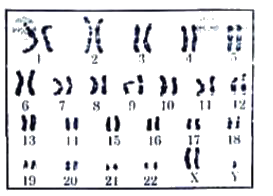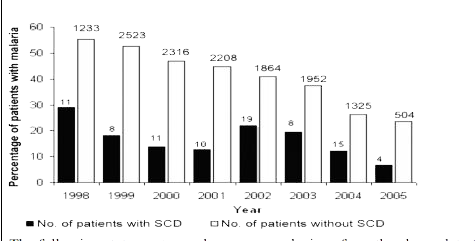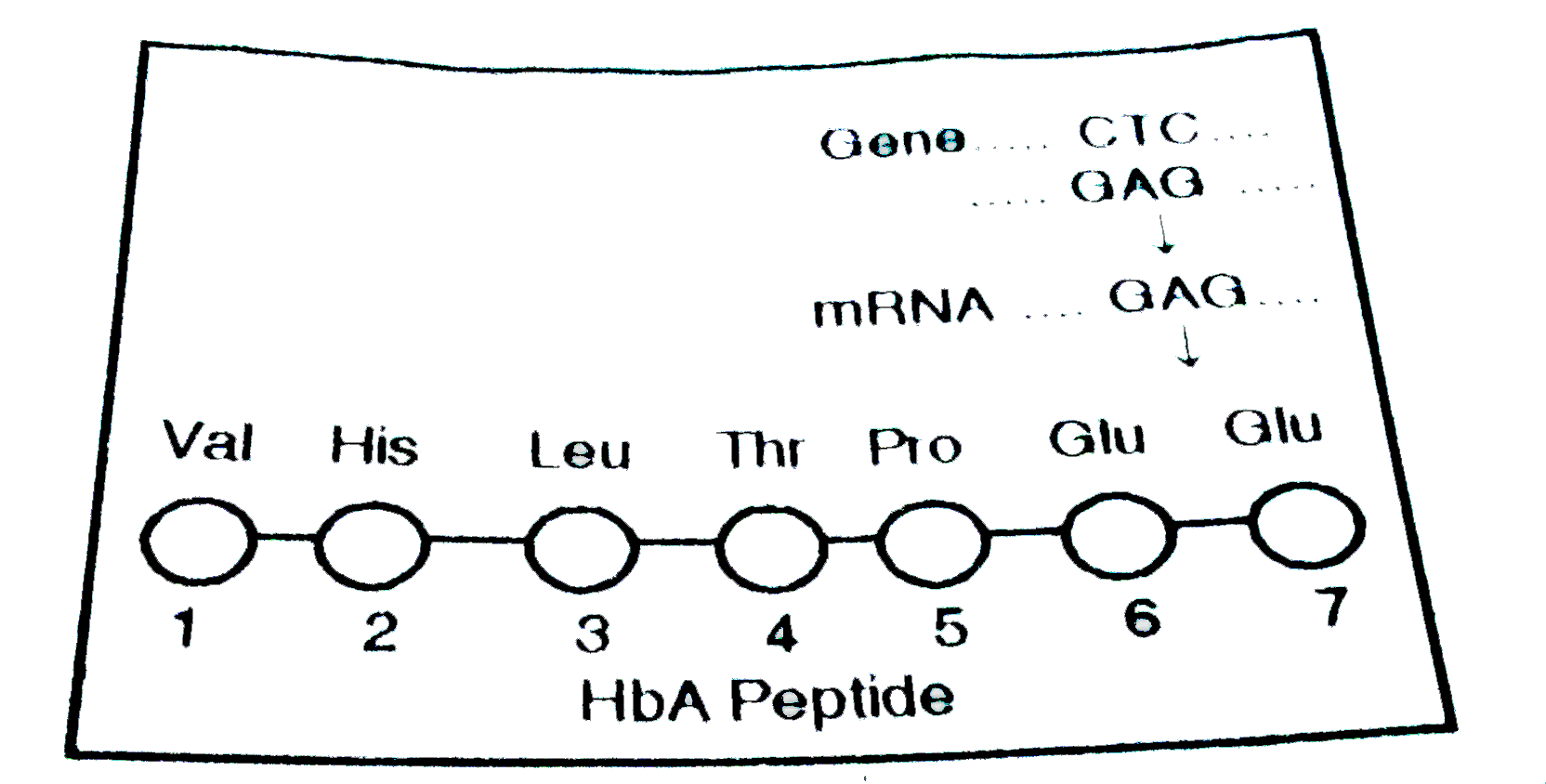Given below a karyotype obtained after analysis of foetal cell for probable genetic disorder .

Based on the above karyotype , the chromosomal disorder detected in unborn foetus and the consequent symptoms the child may suffere from are -
Down's syndrome : Gynaecomastia , overall masculine development
Down's syndrome : Furrowed tongue ,short stature
Klinefelter's syndrome : Gynecomastia Masculine development
Klinefelter's syndrome : Rudimentary ovaries short stature
Step by step video & image solution for Given below a karyotype obtained after analysis of foetal cell for probable genetic disorder . Based on the above karyotype , the chromosomal disorder detected in unborn foetus and the consequent symptoms the child may suffere from are - by Biology experts to help you in doubts & scoring excellent marks in Class 12 exams.
Topper's Solved these Questions
- BOOK - XII BOARDS PREVIOUS YEARCHAPTER - QUESTION PAPER 2022 TERM 1 SET 1EXERCISE - SECTION-B24videos
QUESTION PAPER 2022 TERM 1 SET 1
- BOOK - XII BOARDS PREVIOUS YEARCHAPTER - QUESTION PAPER 2022 SET-3EXERCISE - SECTION C8videos
QUESTION PAPER 2022 SET-3
- BOOK - XII BOARDS PREVIOUS YEARCHAPTER - QUESTION PAPER 2022 TERM 1 SET 2EXERCISE - SECTION-C12videos
QUESTION PAPER 2022 TERM 1 SET 2
Similar Questions
Name a disorder a human suffers from as a result of monosomy of the sex chromosome. Give the karyotype and write the symptoms.
View Solution(i) List the chromosomal disorders a human may suffer from if karyotype analysis of the individual shows 47 chromosomes instead of normal 46
(ii) Explain the cause that results in the gain of chromosome number.
(iii) Mention the symptoms of any one the disorders an individual can suffer fromView Solution
Knowledge Check
- Question 1 - Select One
Sickle cell anemia is a genetic disorder where the body produces an abnormal hemoglobin called hemoglobin S. Red blood cells are normally flexible and round, but when the hemoglobin is defective, blood cells take on a “sickle” or crescent shape. Sickle cell anemia is caused by mutations in a gene called HBB. It is an inherited blood disorder that occurs if both the maternal and paternal copies of the HBB gene are defective. In other words, if an individual receives just one copy of the defective HBB gene, either from mother or father, then the individual has no sickle cell anemia but has what is called “sickle cell trait”. People with sickle cell trait usually do not have any symptoms or problems but they can pass the mutated gene onto their children. There are three inheritance scenarios that can lead to a child having sickle cell anemia:
- Both parents have sickle cell trait
- One parent has sickle cell anemia and the other has sickle cell trait
- Both parents have sickle cell anemia
If one parent has sickle cell anemia and the other has sickle cell trait, there is __________that their children will have sickle cell anemia and ___________will have sickle cell trait.A25 % risk, 75% riskB50 % risk, 50% riskC75% risk, 25% riskD75% risk, 25% risk - Question 2 - Select One
Sickle cell anemia is a genetic disorder where the body produces an abnormal hemoglobin called hemoglobin S. Red blood cells are normally flexible and round, but when the hemoglobin is defective, blood cells take on a “sickle” or crescent shape. Sickle cell anemia is caused by mutations in a gene called HBB. It is an inherited blood disorder that occurs if both the maternal and paternal copies of the HBB gene are defective. In other words, if an individual receives just one copy of the defective HBB gene, either from mother or father, then the individual has no sickle cell anemia but has what is called “sickle cell trait”. People with sickle cell trait usually do not have any symptoms or problems but they can pass the mutated gene onto their children. There are three inheritance scenarios that can lead to a child having sickle cell anemia:
- Both parents have sickle cell trait
- One parent has sickle cell anemia and the other has sickle cell trait
- Both parents have sickle cell anemia

The following statements are drawn as conclusions from the above data (Kenya).
I. Patients with SCD (Sickle Cell Disease) are less likely to be infected with malaria.
II. Patients with SCD (Sickle Cell Disease) are more likely to be infected with malaria.
III. Over the years the percentage of people infected with malaria has been decreasing.
IV. Year 2000 saw the largest percentage difference between malaria patients with and without SCD.
Choose from below the correct alternative.Aonly I is trueBonly I is trueCIII and II are trueDI and III are true - Question 3 - Select One
Chromosomal disorders are caused due to absence or excess or abnormal arrangement of one or more chromosomes. Failure of segregation of chromatids during cell division cycle results in the gain or loss of a chromosome, and is called aneuploidy. Failure of cytokinesis after telophase stage of cell division results in an increase in a whole set of chromosomes in an organism and, this is known as polyploidy.
This genetic disorder called ................. is caused due to the presence of an additional copy of ...........-Chromosome resulting into a karyotype of 47, XXY. Identify the disorder.ADown's syndrome, YBKlinefelter's syndrome, XCTurner's syndrome, XDPhenylketoneuria, Y
Karyotype of a child shows trisomy of chromosome number 21. Identify the disorder and state the symptoms which are likely to be exhibited in this case.
View SolutionGiven below is the representation of a relevant part of amino acid composition of the β-chain of haemoglobin, related to the shape of human red blood cells.

(a) Is this representation of the sequence of amino acids indicating a normal human or a sufferer from a certain blood related genetic disease ? Give reason in support of your answer.
(b) Why is the disease referred to as a Mendelian disorder ? Explain.View SolutionThe cause of chromosomal disorders is absence or excess of abnormal arrangement of one of more chromosomes.
Analysis of karyotypes is used to study the chromosomal disorders. l(aryotype is defined as the profile of an individual's chromosomes that are arranged according to their shape, size and number.
Case - Sarika encountered a teenager with short stature and a small round head, furrowed tongue and partially open mouth The palm of the person is broad with characteristic palm crease. She has a doubt that the individual might be suffering from a Chromosomal disorder.
On the basis of your reading, answer the following questions:
Name the syndrome from which the given individual might be suffering. Describe it along with its symptoms.View SolutionWrite the formulae of the salts given below :
Potassium sulphate , sodium sulphate , calcium sulphate , magnesium sulphate , copper sulphate , sodium chloride , sodium nitrate , sodium carbonate and ammonium chloride.
Identify the acids and bases from which the above salts may be obtained . How many families can you identify among these salts ?View SolutionSickle cell anemia is a genetic disorder where the body produces an abnormal hemoglobin called hemoglobin S. Red blood cells are normally flexible and round, but when the hemoglobin is defective, blood cells take on a “sickle” or crescent shape. Sickle cell anemia is caused by mutations in a gene called HBB. It is an inherited blood disorder that occurs if both the maternal and paternal copies of the HBB gene are defective. In other words, if an individual receives just one copy of the defective HBB gene, either from mother or father, then the individual has no sickle cell anemia but has what is called “sickle cell trait”. People with sickle cell trait usually do not have any symptoms or problems but they can pass the mutated gene onto their children. There are three inheritance scenarios that can lead to a child having sickle cell anemia:
- Both parents have sickle cell trait
- One parent has sickle cell anemia and the other has sickle cell trait
- Both parents have sickle cell anemia
If both parents have sickle cell trait, then there is _______________of the child having sickle cell anemia.View Solution

